Rotel A14 Mk II Integrated Amplifier Review
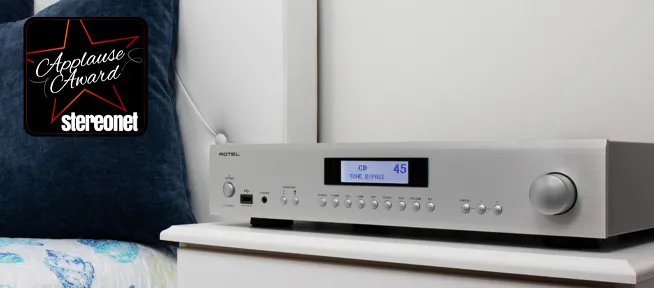
James Michael Hughes auditions a seriously capable affordable audiophile amplifier…
Rotel
A14 MKII Integrated Amplifier
£1,195 RRP
The wallet-friendly new Rotel A14 Mk II integrated amplifier is billed as the flagship model in the company's affordable 14 series of products. Compared to its Mk I predecessor, it has been heavily modified with almost one hundred different signal path component changes and circuit design enhancements. The company says that all this results in "more details in the rendered audio, with a larger sound stage and improved spatial positioning", no less.
The new amp sits bang-smack in the middle of the 'budget super integrated' market sector, designed for people with more money to spend than beginners but not wishing to go too high up the ladder. It's a very competitive field and, as such, has to put out a decent amount of power, as well as having excellent connectivity. As you would expect, the A14 Mk II is a solid-state Class AB design, delivering a claimed 80W into 8 ohms, and nearly twice that – 150W – into 4 ohms; the latter stat suggests it has a strong power supply. Indeed, if you peek inside, you will find a large in-house manufactured toroidal mains transformer and four slit-foil power supply capacitors.
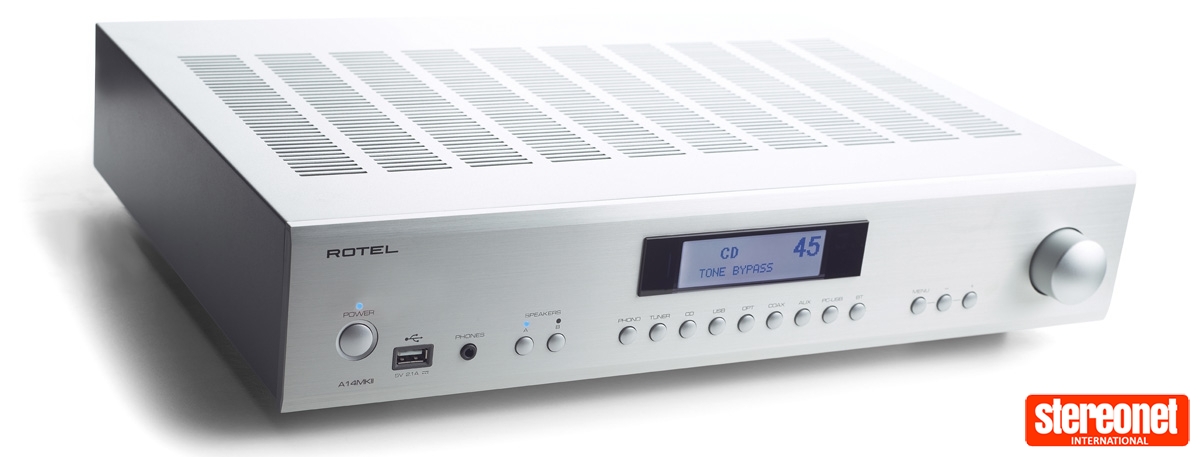
As with so many modern integrateds these days, it comes with a built-in DAC. This one uses a Texas Instruments 32-bit/384kHz chip which Rotel claims to have fine-tuned for superior sonic performance. Improvements to the power supply and amplifier gain stages are said to have further refined the sound. Apparently, according to the company, the new Mk II versions of the A14 (and RA-1572 and RA-1592) have "extensive acoustic circuit upgrades and have been re-engineered to an even higher level of performance, leveraging technologies developed for the Michi Series."
Typically, bass and treble tone controls are provided at this price point – with +/- 10dB adjustment in 1dB steps. A Bypass setting gives you a pure straight-through option and should usually be kept this way for optimum sound. The A14 Mk II supports analogue and digital sources, including PC USB with MQA/MQA Studio, wireless aptX, and AAC Bluetooth streaming. There's even a MM phono stage for vinyl users. The A14 Mk II is certified Roon Tested. There are two sets of switchable loudspeaker outputs, plus a left/right stereo balance control.
The amp is available in silver or black finishes and is a reasonably compact design that measures 430x93x345mm, but is surprisingly heavy at nearly 9kg. The rear panel is full of sockets, and Rotel has done well to shoehorn so much technology into such a small space. The casework gets mildly warm to the touch. Overall it's a nicely screwed together product that feels like a quality item, although it wins no prizes for originality.

THE LISTENING
First impressions were favourable, but give this amp a good few hours before listening seriously from new. Straight from the box, the A14 Mk II sounded sweet and open but a wee bit diffused. However, that soon changed, and with use, the sound grew increasingly focused and detailed. The result was a crisp, engaging and enjoyable listen – one that's on the warm and sweet side of neutral, albeit not too coloured.
I went over to the A14 Mk II, having been listening to a Marantz Model 30. This is hardly a close price rival, the Rotel being substantially cheaper, but it was interesting to hear that it wasn't giving much away. The Marantz is a Class D design – a particularly good one, it must be said – and offers slightly more power, not dissimilar features (tone and balance controls) but no digital circuitry. It has a somewhat more open and airy sound, a tad sharper and slightly more transparent. The Rotel sounded richer and fuller, with a slightly darker and weightier presentation. I felt the Marantz might have been slightly cleaner, but there wasn't much in it.
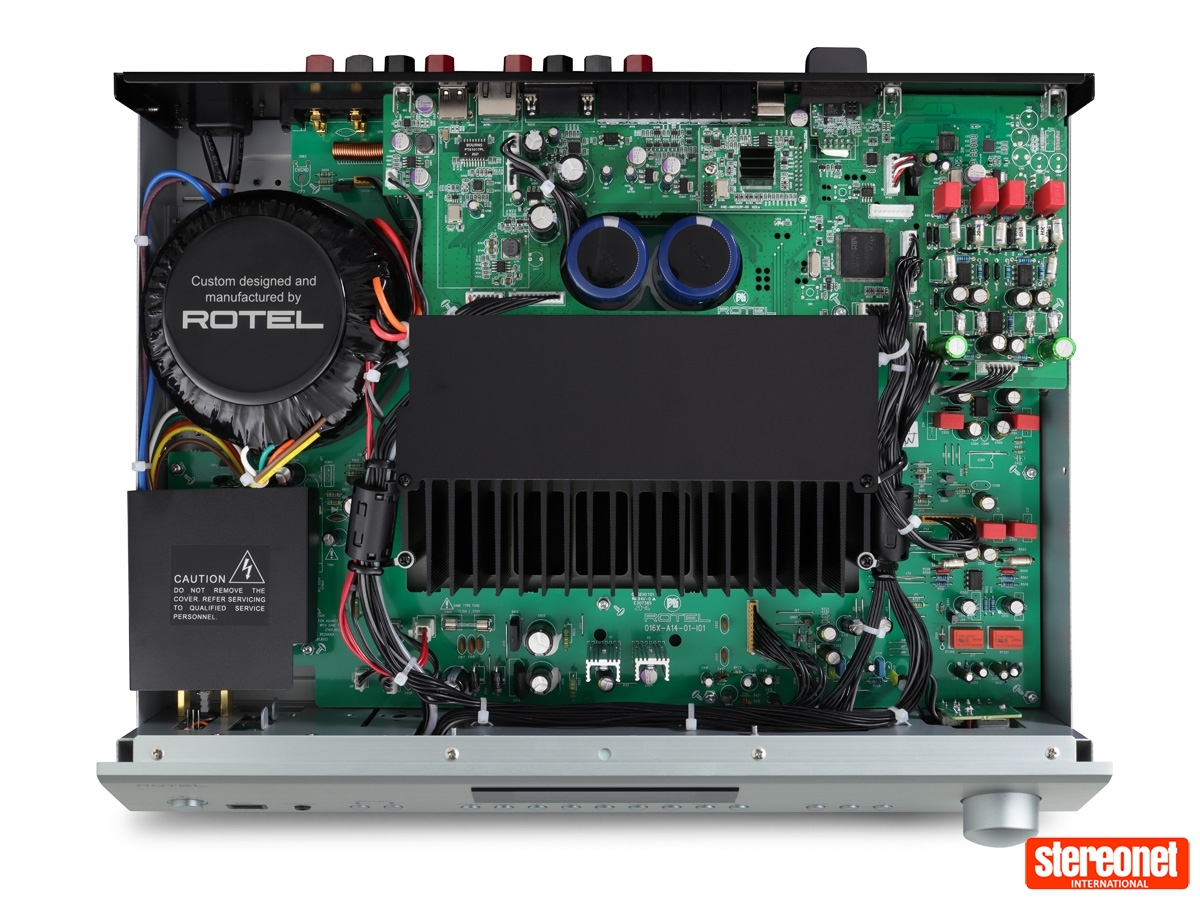
Playing Miles Davis' Kind of Blue via a line input, the Rotel sounded rich, detailed and nicely spacious. The Marantz 30 was a bit leaner and sharper. It had that open transparency you seem to get with good Class D, while the Rotel was fuller and warmer. Marantz doesn't believe in putting digital circuits into analogue amplifiers, so – to get some of the digital options offered by the A14 Mk II – you'd have to shell out more again to partner the Model 30 amplifier with the matching 30n SACD player, which also includes a built-in streamer.
Surprisingly perhaps, as built-in phono stages aren't famously good in amps of this price, the A14 Mk II's moving magnet input produced excellent results. Used with Vertere's fantastic DG-1 record player tracking its Sabre MM cartridge, the sound was very smooth and spacious. It sounded clean and detailed, with low background noise. Indeed the Rotel gave Vertere's Phono 1 MC/MM preamp a run for its money. So you'd have to pay a significant premium to get an outboard phono stage that bettered the Rotel's built-in one, the only issue being that the latter is moving magnet only, and some may find that limiting.
The sound had impressive weight and clarity, playing Stravinsky's Rite of Spring on DG with Pierre Boulez on a new 45rpm 180g vinyl pressing. On CD, this recording can sound a bit thin and cramped, but the vinyl sound had greater depth and space.

I partnered the A14 Mk II with the Marantz 30n SACD player for CD listening, comparing it to an Audiolab 6000CDT transport feeding the digits into the Rotel's onboard DAC. The 30n is a really exceptional silver disc player, so I was surprised by how close the 6000CDT/Rotel combo sounded in comparison. Playing the Chandos recording of Arensky's 1st Symphony with Valeri Polyansky using the Audiolab as a source, I was impressed by Rotel's clarity and soundstaging. It compared well to the Marantz 30n. While they each sounded slightly different, I found it difficult to say one was better than the other.
The Rotel's onboard DAC sounds very clean and offers excellent clarity and tonality, with a wide dynamic range and plenty of detail. I used the Marantz via its variable sockets with the output level set to max. These deliver a slightly higher output voltage than usual – around 4V. Playing most CDs most of the time, there's no problem with this, but a very highly modulated CD can cause the input of the A14 Mk II to clip on peaks. So be careful when connecting anything that has a higher maximum output than the usual 2V. I also used the Rotel with an Auralic Altair G2.1 streamer (4.5V max output) and had the same problem. However, it's not really an issue providing you reduce the device's output level in question or use a lower output set of sockets – the Marantz 30n offers both options.
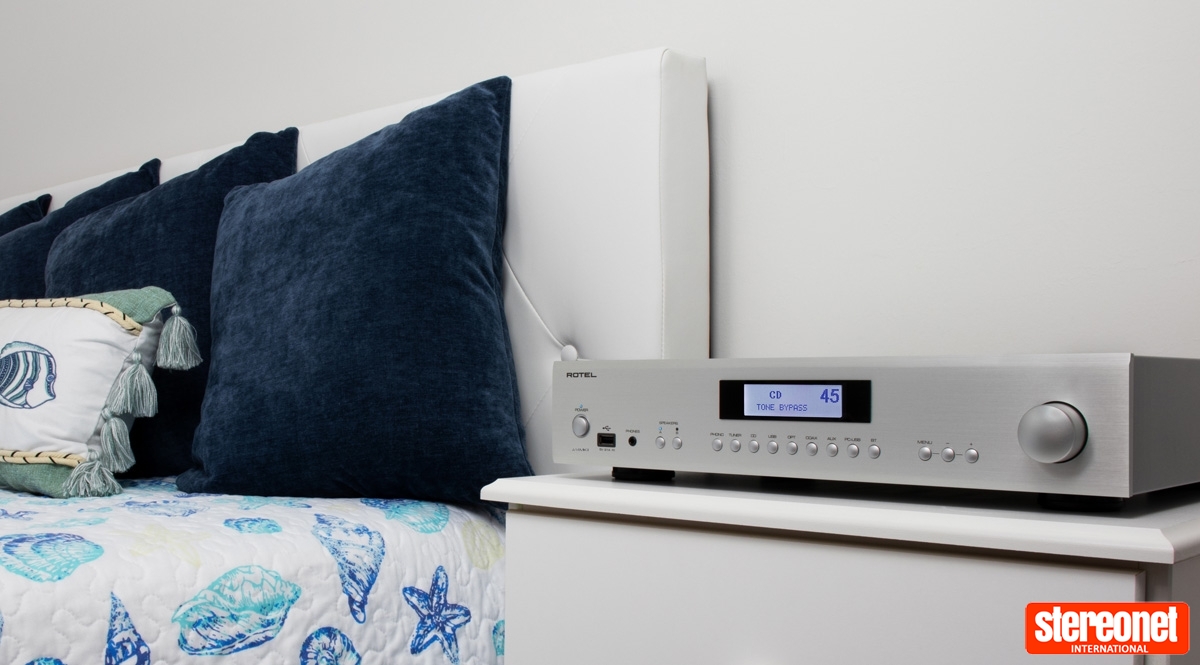
Subjectively, I rather liked the effect produced by Rotel's tone controls. During the review period, I took delivery of some Klipsch Cornwall IV loudspeakers, which initially sounded a bit bright. After a week's use, they grew noticeably more relaxed but still seemed a wee bit forward. As my regular Musical Fidelity Nu Vista 800 does not offer tone controls, it was useful to be able to dial in a small amount (-1dB) of treble cut on certain recordings with the A14 Mk II.
Hopefully, once the Cornwalls are fully burnt-in, tonal compensation won't be needed, but it can take a while before a speaker finally settles down. And anyway, some recordings do have tonal irregularities that benefit from correction. A bass boost (+1dB) helped beef up the low-end – useful, as the KEF KC62 sub I'd been using recently went back to the manufacturer after review. The Rotel sounds cleaner and more transparent when the tone controls are set to Bypass, but the difference isn't huge. It's nice to have a left/right stereo balance control. I'd also have liked a stereo/mono button, but perhaps there simply wasn't room?
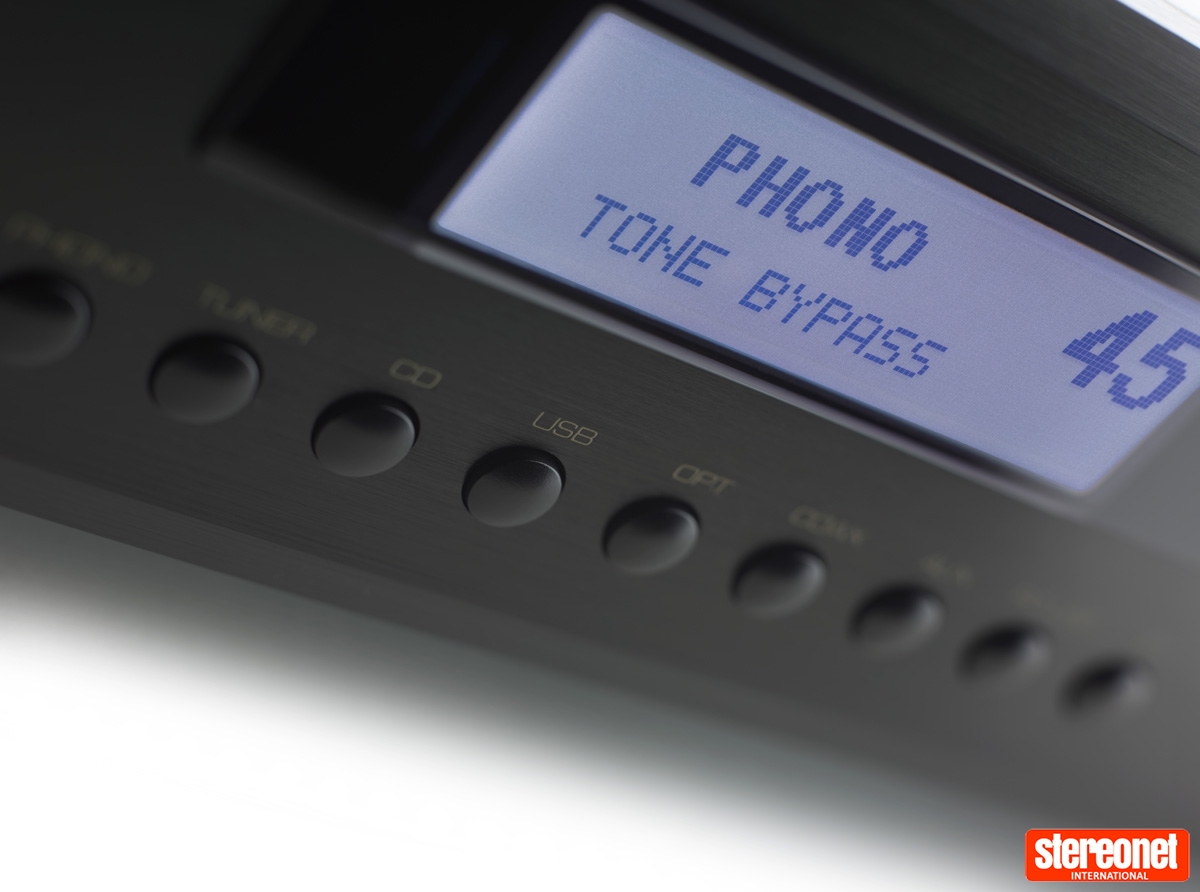
THE VERDICT
 Rotel's reputation for making keenly priced products that challenge rival's items costing much more is alive and well with the new A14 Mk II. The company has been doing this since the early nineteen eighties – remember the RA 820BX, anyone? – and so this upholds a fine tradition. It really is an excellent amplifier at the price and represents super value for money in what's an already crowded marketplace.
Rotel's reputation for making keenly priced products that challenge rival's items costing much more is alive and well with the new A14 Mk II. The company has been doing this since the early nineteen eighties – remember the RA 820BX, anyone? – and so this upholds a fine tradition. It really is an excellent amplifier at the price and represents super value for money in what's an already crowded marketplace.
While I would be more than happy to use the A14 Mk II myself, I'd also suggest that prospective purchasers investigate Rotel's slightly more expensive RA-1572 Mk II, which offers increased power and a balanced line input for not much extra. Still, nothing is lacking with this model on test. Indeed I loved it. Nice one, guys.
For more information visit Rotel
James Michael Hughes
An avid audiophile for many decades, Jimmy has been writing about hi-fi since 1980 in a host of British magazines, from What Hi-Fi to Hi-Fi Choice. Based in London, England, he’s one of the UK’s most prolific record and CD collectors – no streaming service can yet match his amazing music collection!
Posted in: Amplifiers | Integrated Amplifier | Applause Awards | 2021 | Hi-Fi
JOIN IN THE DISCUSSION
Want to share your opinion or get advice from other enthusiasts? Then head into the Message
Forums where thousands of other enthusiasts are communicating on a daily basis.
CLICK HERE FOR FREE MEMBERSHIP
Trending
applause awards
Each time StereoNET reviews a product, it is considered for an Applause Award. Winning one marks it out as a design of great quality and distinction – a special product in its class, on the grounds of either performance, value for money, or usually both.
Applause Awards are personally issued by StereoNET’s global Editor-in-Chief, David Price – who has over three decades of experience reviewing hi-fi products at the highest level – after consulting with our senior editorial team. They are not automatically given with all reviews, nor can manufacturers purchase them.
The StereoNET editorial team includes some of the world’s most experienced and respected hi-fi journalists with a vast wealth of knowledge. Some have edited popular English language hi-fi magazines, and others have been senior contributors to famous audio journals stretching back to the late 1970s. And we also employ professional IT and home theatre specialists who work at the cutting edge of today’s technology.
We believe that no other online hi-fi and home cinema resource offers such expert knowledge, so when StereoNET gives an Applause Award, it is a trustworthy hallmark of quality. Receiving such an award is the prerequisite to becoming eligible for our annual Product of the Year awards, awarded only to the finest designs in their respective categories. Buyers of hi-fi, home cinema, and headphones can be sure that a StereoNET Applause Award winner is worthy of your most serious attention.





